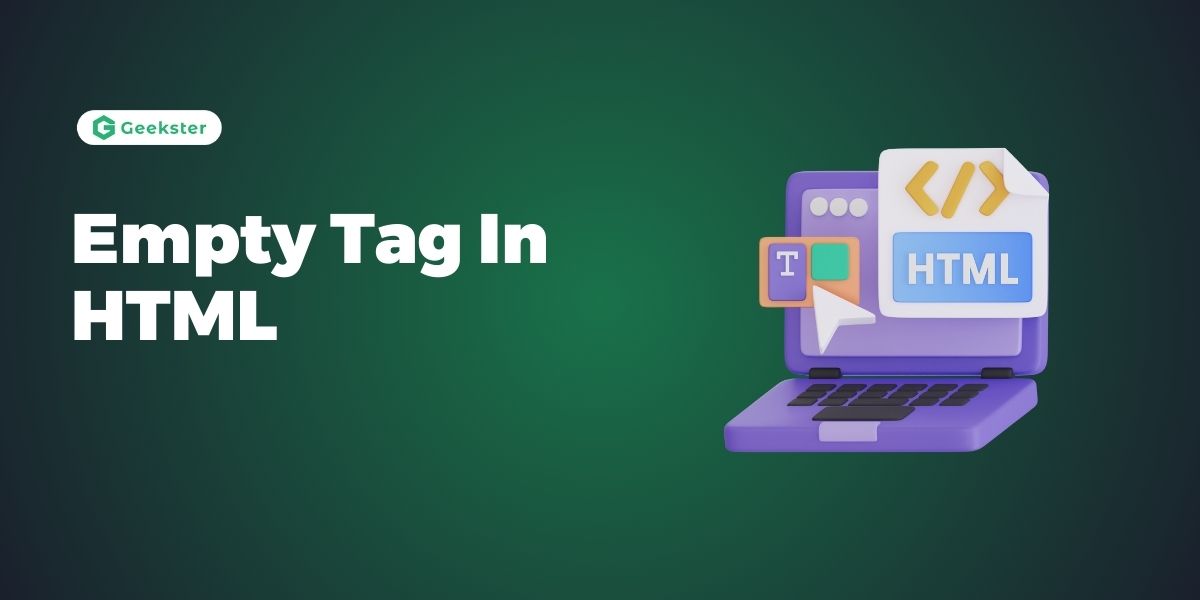Introduction
HTML is the skeletal structure on which any web development rests. It provides numerous elements for structuring and presenting content on the web. Some of the elements in HTML are known as empty tags. Empty elements are elements without content or closing tags. They are self-contained and self-closing. This article covers the notion of empty tags, their significance, and their proper use through examples. The element is known as an empty element or a self-closing element that contains no content or child elements within it. The standard HTML element takes the following form: opening tag, content, closing tag. An empty element is written as a single tag that ends with a trailing forward slash .
Example :
<img src="image.jpg" alt="Description" />Importance of Empty tags in html
Empty tags are used when some elements don’t need content in-between their opening and closing tags. They introduce a special purpose element to the document in an efficient way with no syntax. It is more efficient for code and more readable.
Common Examples of Empty tags
There are many examples of empty tag that are widely used in HTML. Below are a few:
1. < img > : It is used to display image on a web-page.
<img src="image.jpg" alt="Description" />2. <br > : It is used to insert break in the text.
<h1> Hello ! <br> empty tag </h1>3. <hr>: Inserts a horizontal rule (line) to separate content.
<hr/>4.<input>: Represents an input field in a form.
<input type="text" name="username" />5. <meta>: Provides metadata about the HTML document.
<meta charset="UTF-8" />However, you should keep the consistency in your coding style. If you will use the self-closing one (trailing slash), do make sure you do it everywhere in the HTML document.
Differences Between HTML and XHTML
In XHTML, which is a more strict and XML-based version of HTML, the use of trailing slash in empty tags is important. This difference highlights the importance of understanding the specific requirements of the markup language you are using.
Conclusion
Empty tags are an essential part of web development in HTML. They provide a way of declaring elements without having to include any content or children under it. They make the code simpler and clean, with proper structure and readability. By implementing empty tags the right way, a developer can create more efficient and concise HTML code, and the code will be easy to read and maintain as well as produce good performance on web pages. The usefulness of the empty tags in embedding important elements like images, line breaks, and metadata into a web page cannot be underestimated because they do this without causing the HTML structure to be polluted with content that does not belong, and therefore enhances the overall semantic integrity of the HTML document.
Differences between XHTML and HTML with regard to empty tags must also be learned. While HTML5 does allow for flexibility in the optional use of trailing slashes, XHTML demands strict self-closing tags in order to validate. Whatever the case, consistency in coding, whether or not one uses trailing slashes, is of prime importance for both readability and maintainability. Mastering the application of empty tags in HTML is a small but important part of web development that will result in a better overall user experience and make long-term web projects easier to manage.
Note : If you want to read more about HTML click here.
Frequently Asked Questions
An HTML empty tag, also known as a void element, is an HTML element that does not have content in its body or a closing tag. Unlike a regular HTML tag that is broken down into an opening tag, content, and a closing tag, an empty tag exists as a self-sufficient element without an ending tag. They apply to an element where it does not need to enclose content, for example, images, line breaks, and horizontal rules.
Using the empty tags properly in HTML is important for several reasons: it ensures the code is clean and readable, meaning the readability and maintainability of HTML code can be improved. Secondly, the right usage of empty tags ensures that the elements maintain their semantic integrity within the document. This usually helps in debugging and performance boosting. Finally, empty tags in HTML and XHTML ensure uniformity in standards and, in turn, avoid rendering problems that could arise across different browsers and platforms.
This is where the major difference between HTML and XHTML for empty tags lies: in the syntax requirements. For HTML5, the use of a trailing slash in empty tags is optional, which provides a way for flexibility in coding style. In XHTML, however, which follows the stricter syntax model of XML, the trailing slash is mandatory for an empty tag, thus rendering the tag self-closing and conforming to the XML syntax. Developers should understand these major differences between HTML and XHTML in order to have their code valid and working properly on different platforms.

